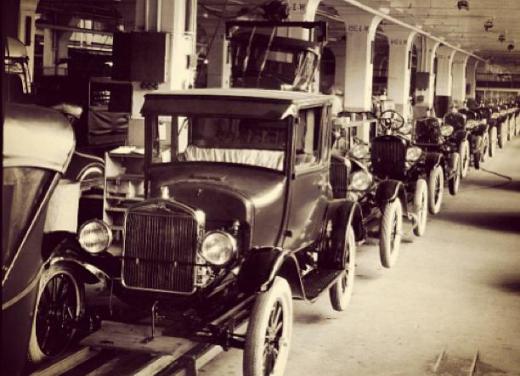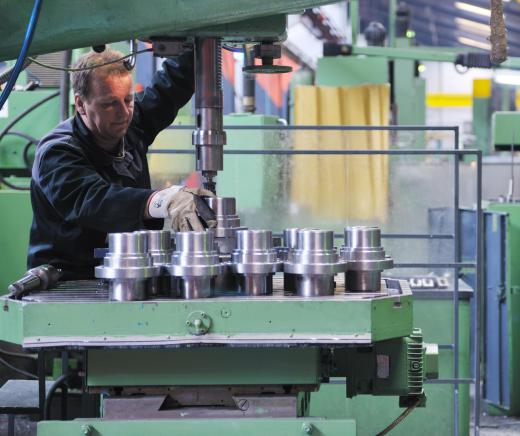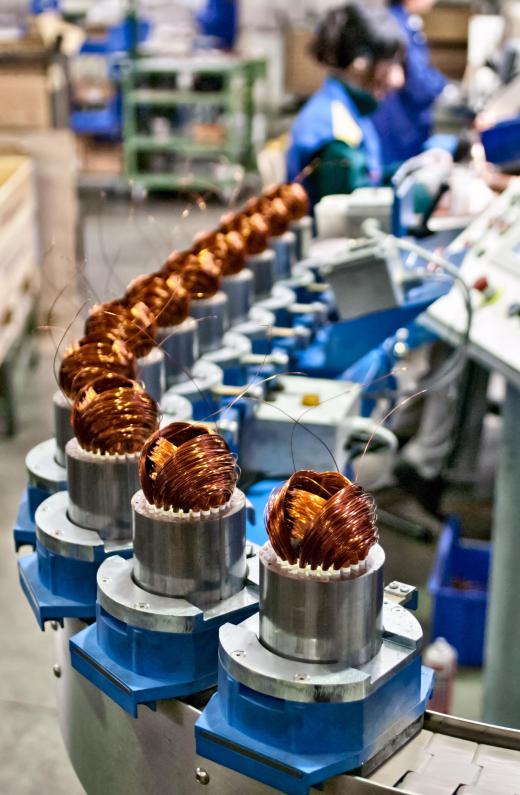The steps in a mass production system for the creation of a machine or product ready for sale are fairly universal across industries. The product is first designed by a group of engineers, chemists, or other technicians and scientists, and then basic components of the product are fabricated in bulk from purchased raw materials. These fabricated components then enter the assembly line stage of mass production, where they are rapidly put together in a standardized, sequential order. During this mass production process, a series of quality control measures are enforced to make sure that the part or material meets design standards. Once assembly and quality control are completed, the product is packaged and loaded on transports for shipping to established markets.
The categories of design, fabrication, and assembly are at the heart of any mass production system. Quality control, packaging, and shipping, while to some degree peripheral, are also integral elements of maintaining a standard, steady flow production of goods from the system. Each of these elements of a mass production system are built upon a structure that merges human labor with that of power-driven machines as closely as possible. The more machine automation that can be incorporated into the process, and the more finite the division of human labor for each stage on an assembly line, the greater the efficiency in generating products becomes.

The development of the mass production process from its early incarnations onward, has proven that the specialization of semi-skilled workers and interchangeability of parts is the most rapid method of producing large quantities of identical copies of goods. When mass production was first developed, it was for military purposes. Comparisons were made to having highly skilled craftsman produce the same products one at a time, which proved significantly slower.

One of the earliest trials for a mass production system was by Marc Brunel, a French mechanical engineer of the 19th century who settled in England. He automated the production of pulley blocks, an essential component for guiding ropes that controlled sails on ships. These parts often broke, and large numbers of them needed to be produced as replacements for the British Navy. During 1802 to 1808, Brunel devised a system at England's Portsmouth dock using a method of serial production on an assembly line, instead of skilled craftsman building the pulley blocks one at a time. Estimates are that his workers produced pulley blocks ten times faster than the previous method, allowing them to generate around 130,000 to 160,000 units in a year's time.

These repetitive flow production methods were developed further in the 19th century meat packing industry in the United States, and Henry Ford took the ideas even further when he built his assembly line mass production system for automobiles in 1913. With the specialization of workers and a moving assembly line for prefabricated parts, Ford was able to cut the time of assembly for an automobile chassis from 12.5 hours each down to 93 minutes each. This made his cars much more affordable than those of competitors, and industry as a whole took notice of his achievement and began a widespread adoption of the mass production system.
